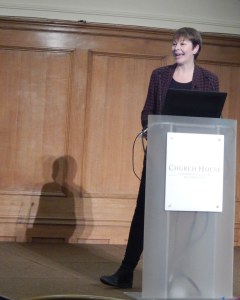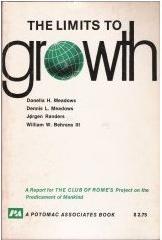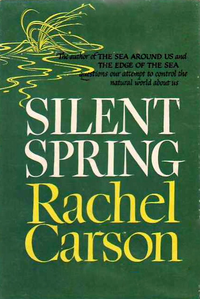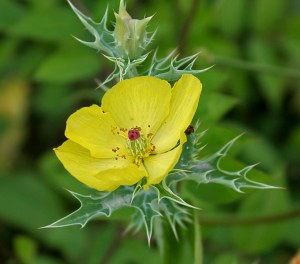
It has been said that nature-lovers are left-wing on all political questions except immigration, where they are distinctly right-wing.
This can readily be explained by guessing that nature-lovers essentially choose to prioritize in the following order:
- Themselves (well, everybody does)
- Wildlife and the Environment
- Other people
- Big business
Immigration is unpopular both because it conflicts with #1: it puts pressure on resources near the home, and because it conflicts with #2: it puts pressure on land.
I’ll return to the question of putting nature above people later, but first I want to note that this set of priorities is radically different from those of the right (say, the Republican party in the USA, or the Conservative party in Britain), who we may guess have these priorities:
1. Themselves
2. Big business
3. Other people
4. Wildlife and the Environment (if they rate this at all)
On this rather simple view of politics, left-wing people (say, the Democrat party in the USA, or the Labour party in Britain) are imagined to have these priorities:
1. Themselves
2. Other people
3. Big business
4. Wildlife and the Environment
The reason left-wingers may put business above wildlife is that, despite all the left-wing rhetoric, they do recognize that business generates the money needed to pay for welfare and shared services such as health care and education. So, although there has been a historic rich vs poor, Upstairs vs Downstairs polarity between left and right, they do actually agree on most of their priorities.
If you’ve followed the argument this far, you’ll see that at least in countries like Britain and the USA, this places anyone who has ‘green’ political views, favouring wildlife and the environment, in a tricky position. There is nobody with any reasonable likelihood of getting into power that they can vote for with any confidence.
In countries like Germany with a proportional representation system for voting, smaller parties are able to flourish, and Green parties can become significant in regional and national parliaments. In countries like Britain and the USA, which have “first past the post” (winner takes all) voting systems, smaller parties usually get trodden underfoot, along with any more subtle points of view than left vs right.
I would love to be able to tell you (I assume you are a nature-lover) that I have a brilliant solution for you, but I doubt there is one. Instead, you have a few possible choices.
- You could carefully study, and ideally question, your candidates from left and right about their views on nature conservation in the hope of finding or provoking a spark in some of them. (I’m trying this myself.)
- You might consider joining their party so you can lobby them more effectively; you might attend policy forums and try to push the environment up the agenda (I don’t hold up much hope on that one, though I know energetic people who are trying it).
- If you have money, you might give donations to either side, accompanied by whatever pressure you can apply.
- If you are persuasive, you might speak or write to the candidates, arguing that saving the environment is good for people (their health, exercise, mental state, and so on) or for jobs (tourism, conservation work, pollination of crops, that sort of thing).
- Or you could move to Germany, work hard, and apply for citizenship. You could give up on politics altogether, and immerse yourself in practical conservation, campaigning and suchlike.
If you don’t find any of those suitable, you do have another option, but it’s very long-term. You campaign for a fair, democratic, voting system that will actually represent your views, along with those of other minorities: you fight for proportional representation. If you thought that was a dull, dry piece of constitutional reform, think again. It’s the only way things that matter to you and to me will ever be taken seriously. We greens need seats in our legislatures, in direct proportion to our numbers. That might be 30 or 40 green MPs in Westminster, for example. Now that would be talking. Until then, frankly, we’re disenfranchised. And that’s wrong.
It’s time to come back to the awkward matter, for green politics, of at least seeming to put nature above people. To put it at its mildest, it can look somewhat self-indulgent in the well-off with money and leisure enough to enjoy looking at wildlife in beautiful places to argue that conserving nature is more important than dealing with the pressing social issues of the day: hunger, homelessness, unemployment, poverty, disease, and all the side- and after-effects of war: trauma, grief, coping as refugees, orphaned or widowed. And that is to hint at the hidden, unspoken issue for green politics, migration, which numbers among its many causes inequality, war, and climate change.
The cause of green politics is not simply an open-and-shut case of selfishness, however. There are arguments that can be used in its favour.
A key one, perhaps, is the moral argument for care for other living things, and for the environment as a whole: we are just one species among millions, and we have just one world to look after, not just for ourselves (the poor, homeless, unemployed and so on) but for all Earth’s species, and for all future generations, our children and our children’s children. If all species were valued equally, and why should they not be, then wildlife should score a millionfold more than any purely human priority. It seems, of course, that nobody can quite bring themselves to value other species anywhere near as highly as Homo sapiens: indeed, even the assertion that a million other species might be worth nearly as much put together as humankind would raise eyebrows – who cares about a rainforest or two when business or livelihood is at stake?
The somewhat more selfish argument that we need nature for a large number of ‘ecosystem services’ such as pollination of crops, a ready supply of timber or fish, genetic variety in the shape of ancestral species related to valuable crops (wild potatoes, wild maize, wild apples) or a list of candidate pharmaceutical drugs from as-yet-undiscovered species of plant, fungus or micro-organism, may have a little more traction. Here, nature is worth conserving for its enormous utility, of which we currently have only a hazy notion, but which we already perceive to be much larger than we ever imagined. Most clearly, the cost to farmers of hand-pollinating every fruit tree is becoming frighteningly obvious as bees of many species vanish from the ploughed and pesticide-sprayed countryside.
A slightly less utilitarian argument concerns the value of nature for human well-being, both now and for future generations. We wouldn’t want to live in a world with no ‘charismatic species’ such as elephants, giraffes, lions, gorillas and tigers. Yet, we could easily find ourselves there, with perhaps a few miserable beasts desperately keeping their species alive in zoos and safari parks. More mundanely, we know that city-dwellers are happier and more relaxed, better able to focus clearly at work, if they have a little time in a park or garden with trees and flowers, and perhaps with bees and butterflies too (if that isn’t too much of a luxury).
If we accept any or all of these quite good reasons for saving life on Earth, then we must make nature conservation a high priority: which means making it a higher priority than at least some human political priorities. And that is a ‘green’ agenda. If anything, it is alarming to anyone who reflects on the question just how little effort is in fact being spent by governments on keeping the world’s ecosystems in existence: we are all so busy fighting wars and economic collapse that such larger matters spend their whole time on the back burner, if not (to mix metaphors disgracefully) on the ‘too difficult’ pile.
Let’s suppose, for the sake of argument, that all the non-human species in existence add up in moral terms to our single species (leaving aside any idea that this grossly undervalues them). Let us suppose, too, that all future generations add up in moral terms to the generation which is alive today (and yes, we’ll ignore any idea that this undervalues them, too). Then all our conventional political goals should be given 1/3 or thereabouts of the total weight: the other 2/3 belong to nature, and to future humanity (who of course may care about nature also). And Nature should then easily top the political agenda.
Or we can look at green politics in space rather than in time. The politics of big business, and of the social systems of rich nations, ignore the rest of the world, where injustice, drought, poverty, dictatorship, war, tropical disease and famine are major factors. Worse, our greed and selfishness has inflicted post-colonial disaster (think of the Anglo-French agreement to draw borders for the new kingdom of Iraq after the First World War) and exploitation of minerals on many parts of the world. We owe it to everyone to put these matters straight, which means protecting the environment: their environment, in the places where we are stripping them of their resources, or already did so, or where we are dumping the wastes that we don’t want to deal with ourselves. This way too, justice means green politics, but more clearly Nature and suffering humanity need to be safeguarded together.
Green politics is not a luxury for the idle rich. Making wildlife and the environment, biodiversity and conservation a top priority is vital for everyone, rich or poor, on the entire planet.





